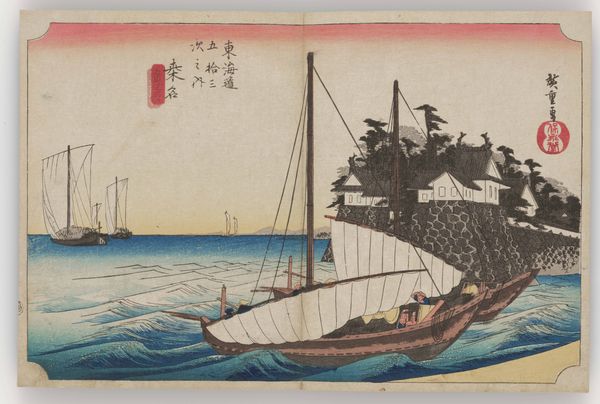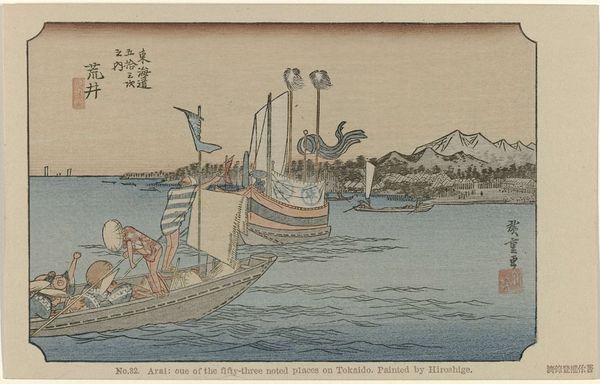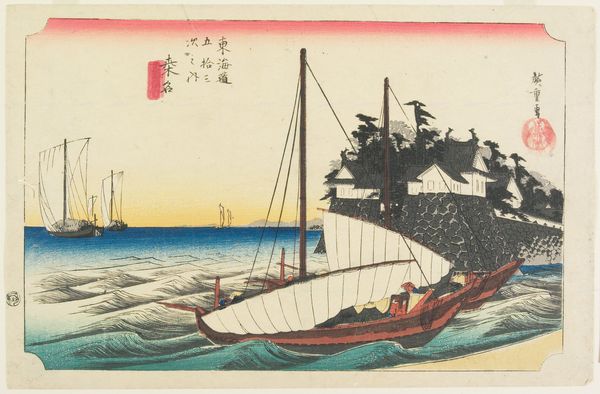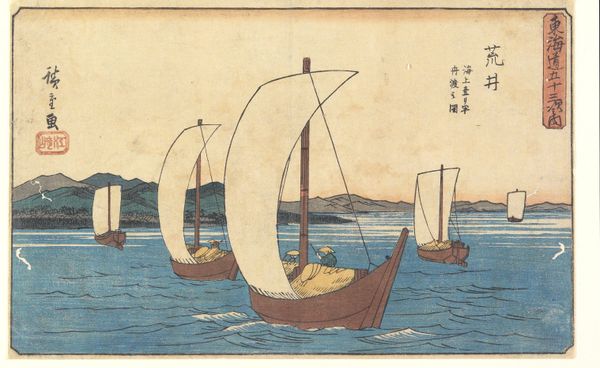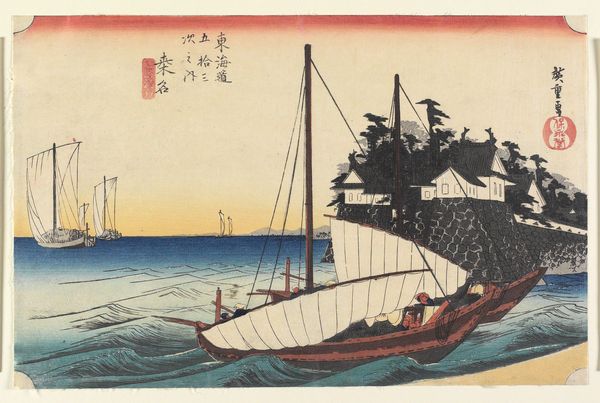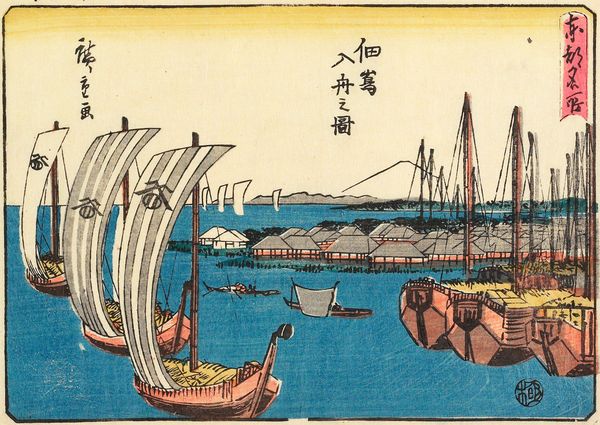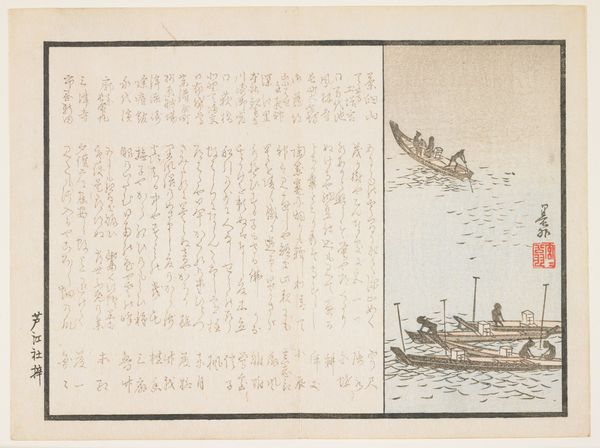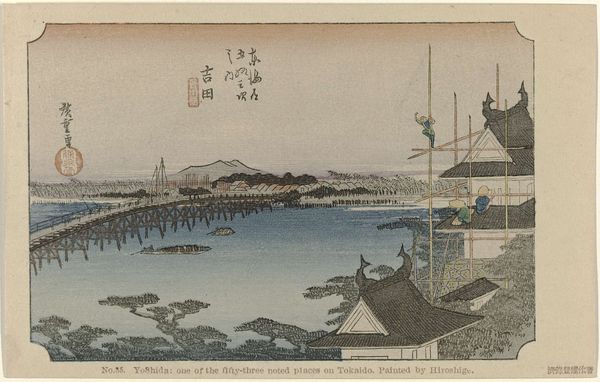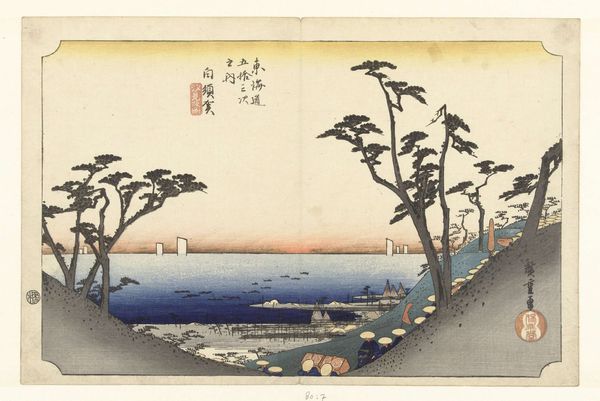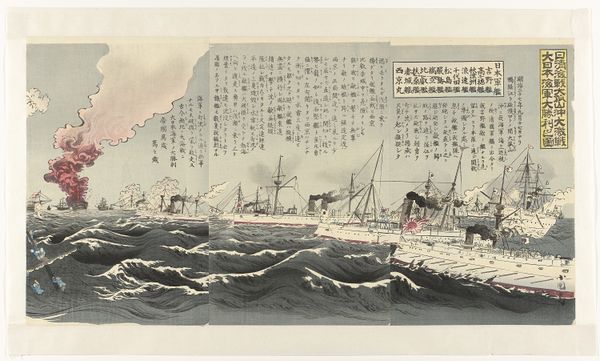
Dimensions: height 90 mm, width 141 mm
Copyright: Rijks Museum: Open Domain
Curator: This woodblock print from 1906 is entitled "Kuwana," by Utagawa Hiroshige I. It’s currently part of the Rijksmuseum collection. My first impression is of tranquility; despite the presence of boats and what appear to be ocean waves, a sense of serene stillness permeates the work. Editor: I agree about the initial sense of calm. Structurally, it's the strategic arrangement of forms that achieves this; notice the compositional harmony of horizontals and diagonals. The parallel lines of the waves meet the diagonal sweep of the sailboats, visually stabilized by the mass of land at the top-right corner. Curator: Right, and Kuwana, as a station along the Tōkaidō road, played a significant role in 19th-century Japanese travel and trade. These prints, part of the *ukiyo-e* movement, were popular souvenirs, affordable depictions of famous landscapes consumed by a burgeoning merchant class eager to experience these scenes. Editor: I find particularly interesting the relationship between the constructed architecture nestled within the natural, almost organic formation of that outcropping of land. The grid of windows and rectangular form juxtaposed against the almost fractal texture of the stone evokes a tension I read as representative of mankind and nature. Curator: That’s insightful. The visual motif carries implications about the control or management of space and resources, and perhaps an appeal for viewers to take a certain type of pride in this intersection between nature and urbanization, commerce and scenery. Editor: What I take from this work also revolves around Japonisme, a distinctly Western idealization of Eastern landscape. In many ways, we are not looking at Kuwana the city, but an image created through the filter of cultural appreciation. Curator: Exactly. This artwork invites discourse about the evolving tastes of consumer culture—the socio-economics of cultural appropriation at large. Thank you for walking through this piece with me. Editor: Of course! Its success resides in its visual economy—its reduction to shape, color and strategic compositional tools creates something transcendent that gestures toward complex issues and history.
Comments
No comments
Be the first to comment and join the conversation on the ultimate creative platform.

